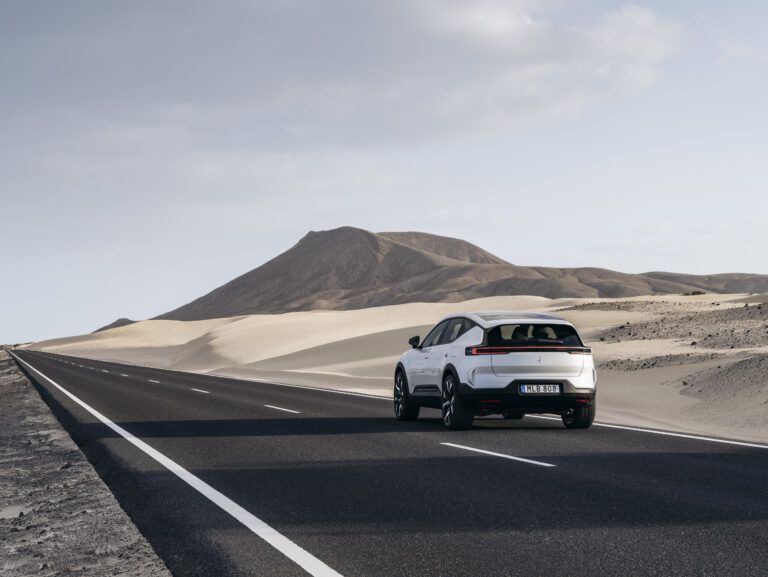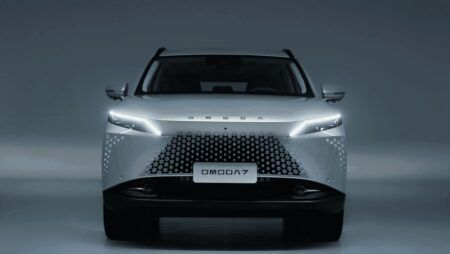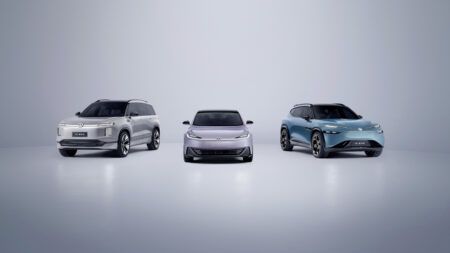Polestar’s latest offering has been updated with a host of technological improvements, with a focus on performance, sustainability, and safety.
Performance overview
Polestar 3 has a dual-motor configuration and a rear power bias. The standard car produces a total of 360 kW and 840 Nm of torque, though optional performance enhancements allow for a total output of 380 kW and 910 Nm. Adjustable one-pedal drive is included, as well as an electric torque vectoring dual clutch function on the rear axle. A decoupling function is also available for the rear electric motor, allowing the car to run only on the front electric motor to save energy if necessary.
“Polestar 3 is a powerful electric SUV that appeals to the senses with a distinct, Scandinavian design and excellent driving dynamics,” said Thomas Ingenlath, Polestar CEO. “It takes our manufacturing footprint to the next level, bringing Polestar production to the United States. We are proud and excited to expand our portfolio as we continue our rapid growth.”
Advanced chassis control is provided by dual-chamber air suspension as standard, allowing Polestar 3 to transition between comfort and dynamic suspension. The SUV can also adjust its active damper velocity electronically once every two milliseconds (500 Hz). “Our goal was to offer the performance and precision that define all Polestar cars, without compromising the comfort of the daily drive,” said Joakim Rydholm, Polestar’s chief chassis engineer. “To do this, we used new components like the adaptive air suspension to engineer the ‘Polestar feeling’ for this type of car.”
A 111 kWh battery pack provides Polestar 3 with driving range of up to 610 km (380 miles). The lithium-ion battery features a prismatic cell design housed in a protective aluminium case with boron steel reinforcement and liquid cooling. A heat pump is included as standard, which will use ambient heat for climate and battery pre-conditioning. Polestar 3 is also equipped for bidirectional charging, built with vehicle-to-grid and plug-and-charge capabilities in mind.
Polestar have updated the aerodynamic profile, including a front aero wing integrated into the bonnet, an aero wing integrated into the rear spoiler, and rear aero blades. “This car has been designed as a Polestar from the start and features new defining characteristics for us – like the dual blade headlights, SmartZone and front aero wing,” said Ingenlath.
Sustainability and safety
Materials used inside Polestar 3 have been selected for their sustainability credentials, such as bio-attributed MicroTech, animal welfare-certified leather and fully traceable wool upholsteries. A complete life-cycle assessment (LCA) will be completed on Polestar 3 when production begins. Subsequent assessments will follow through its life cycle.
The electric SUV features an NVIDIA DRIVE core computer, running software from Volvo Cars. Serving as the AI brain, NVIDIA’s automotive platform processes data from the car’s multiple sensors and cameras to enable advanced driver-assistance safety features and driver monitoring. The infotainment system is powered by a snapdragon cockpit platform from Qualcomm Technologies, Inc. As a central component of the digital chassis, the platform will be utilised to provide high-definition displays, surround sound and intra-vehicle connectivity.
Polestar 3 also features advanced active and passive safety technology from Volvo Cars. This includes interior radar sensors that can detect sub-millimetre movements in the interior of the car, to help protect against accidentally leaving children or pets inside. The system is also linked to the climate control system to avoid heat stroke or hypothermia.
As standard, Polestar 3 features a total of five radar modules, five external cameras and twelve external ultrasonic sensors to support numerous advanced safety features. The SmartZone below the front aero wing collects several of the forward-facing sensors, a heated radar module and camera. Inside, two closed-loop driver monitoring cameras enable eye tracking technology from Smart Eye. The cameras monitor the driver’s eyes and can trigger warning messages, sounds and even an emergency stop function when detecting a distracted, drowsy or disconnected driver.
Further features
Android Automotive OS is the in-car operating system, co-developed with Google and fronted by a 14.5-inch centre display. Over-the-air (OTA) updates are included to allow for continuous software improvement and the introduction of new features without the need to visit a service point.





